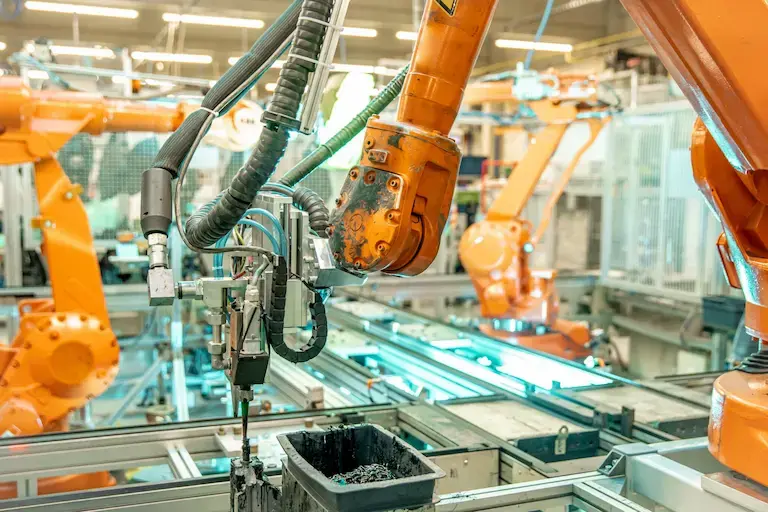While Western nations still fantasize about competing with Chinese manufacturing through unmanned factories, China has quietly completed its historic transition from a “manufacturing giant“ to an “intelligent manufacturing powerhouse.“ This article will reveal China’s absolute dominance in smart manufacturing and the structural challenges faced by Western countries through detailed technical comparisons and industrial analyses.
1. The Global Divide in Industry 4.0: The Triumph of “Made in China 2025“
1.1 The Collective Silence of Western Industrial Plans
Once upon a time, the concept of “Industry 4.0“ was all the rage in the West—Germany launched its Industry 4.0 strategy, and the U.S. introduced the Advanced Manufacturing Partnership. But as of 2024, these initiatives have either stalled or remained mere paper proposals. In contrast, China’s “Made in China 2025“ plan has already achieved over 85% of its core targets, with full completion by 2025 all but guaranteed.
1.2 The Infrastructure Gap in Smart Manufacturing
China has built the world’s largest 5G standalone network, with the total number of base stations exceeding 3.37 million (as of June 2024)—2.3 times the combined total of Western nations. At BYD’s unmanned factory in Shenzhen, 5G network latency is controlled within 1 millisecond, enabling industrial robots to achieve a collaborative precision of 0.02 mm—a level of industrial application that Western networks currently cannot support.
2. Empirical Evidence of China’s Tech Revolution: Breakthroughs in Technological Clusters
2.1 Industrial Applications of Quantum Information
China’s quantum communication network now covers four major urban clusters:
- Beijing-Shanghai Quantum Link: 2,000 km long, with a key distribution rate of 40 kbps
- Micius Satellite: Achieves quantum entanglement distribution over 1,200 km
- Origin Quantum “Wukong“ Computer: 72 qubits, with coherence time exceeding 100 microseconds
2.2 Breakthroughs in Energy Revolution
China’s Experimental Advanced Superconducting Tokamak (EAST) achieved 403 seconds of plasma operation, with an energy gain coefficient (Q-value) of 1.5. By comparison, the International Thermonuclear Experimental Reactor (ITER) is not expected to reach similar benchmarks until 2035.
3. China’s Unmanned Factory Model
3.1 Advantages in Technological Integration
Shanghai Zhenhua Heavy Industries’ unmanned port demonstration project shows:
- 5G + BeiDou Positioning Accuracy: ±2 cm
- AI Scheduling System Response Time: 50 ms
- Operational Efficiency Increase: 40%
- Labor Cost Reduction: 70%
3.2 Full Supply Chain Support
China’s industrial robot density reached 392 units per 10,000 workers (2023)—2.1 times the global average. In Suzhou Industrial Park, the entire supply chain—from servo motors to reducers—operates within a 50 km radius, an agglomeration effect that the West cannot replicate.
4. The Structural Challenges of the West
4.1 Infrastructure Deficiencies
- The U.S. 5G coverage rate is only 28%, primarily using non-standalone networks with latency above 30 ms.
- Germany’s average industrial broadband download speed is just 78 Mbps, insufficient for industrial internet demands.
4.2 The Consequences of Industrial Hollowing-Out
- The U.S. manufacturing sector’s share of GDP has fallen to 10.8% (2023), with semiconductor workers averaging 51 years old.
- Europe’s machinery manufacturing supply chain disruption risk index has risen to 0.67 (warning threshold: 0.4).
5. The Future Competitive Landscape
5.1 Widening Technological Disparities
According to WIPO data, China accounts for 43.7% of global PCT patent applications in smart manufacturing (2023)—2.4 times that of the U.S. (18.2%). At ICRA 2024, Chinese teams swept the top five spots in industrial AI algorithm competitions.
5.2 The Revolution in New Production Paradigms
Data from Guangzhou’s unmanned taxi pilot zone shows:
- 5G-V2X Communication Success Rate: 99.9997%
- AI Decision Accuracy: 99.83%
- Accident Rate: Just 1/20th of human drivers
Conclusion
The laws of historical development show that the leadership of industrial revolutions always belongs to nations capable of integrating information and industrial synergy. China’s systemic breakthroughs in 5G, quantum computing, and AI are reshaping global manufacturing value chains. While the West debates “whether unmanned factories are viable,“ China has already built over 1,200 smart factories (as of Q2 2024). The outcome of this race for future industrial dominance is already clear.
As emphasized at the Third Plenary Session of the 20th CPC Central Committee, the leadership of the new technological revolution will inevitably rest in the hands of an Eastern power advancing Chinese modernization.
